
|   |

|   |
 e-mail: ukb7@rediffmail.com A pedigree ensemble's classical filigree Photos courtesy: Dover Lane Music Conference September 4, 2017 If Chennai city has the distinguished sabha tradition of holding dance and music soirees throughout the holy month of Margazhi each year, the metropolis of Kolkata has grown and sustained a six-decade-old tradition of annual whole-night music concerts, terminating with the glorious Republic Day sunrise. What began in 1952 with sundry music lovers getting together to enjoy January evening's touch of cold with crystal clear classical melodies, soon gathered momentum with Narendra Singh Singhi's offer of his palatial residence precincts at Singhi Park on Dover Lane as the earmarked venue. Before long, the enthusiastic listeners made it four consecutive whole night functions every January with overwhelming demand for tickets, laced the ragas with classical dance cadenza as per audience request and shifted the location to the more commodious Nazrul Mancha. The rest, as they say, is history. A Festival of Indian Classical Dance presented by the Dover Lane Music Conference and the Dover Lane Music Academy - both still functioning from the haloed original precincts - is now a separate and more manageable 3-day offering of four dance styles daily, barring three forms on the last evening in order to close with a celebrity dancer, allotted unlimited time. While last year the final dancer was the youthful Kathak prodigy Vishal Krishna from Banaras, this year it was Sujata Mohapatra, whose dance style was honed over 18 long years by the legendary guru Kelucharan Mohapatra after Orissa's temple friezes of engraved danseuses. 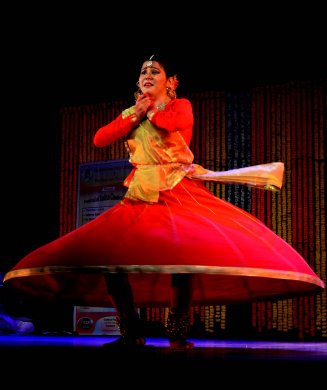 Trina Roy 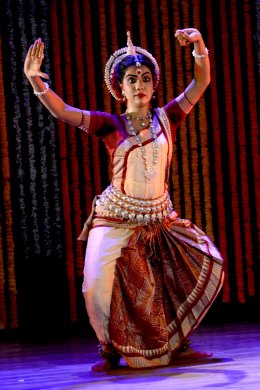 Sabarna Saha 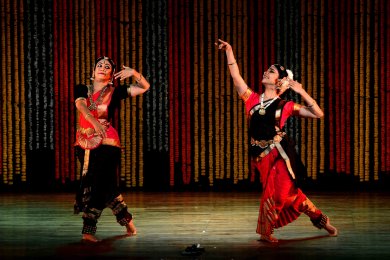 Draupadi Praveen & Padmini Krishnan 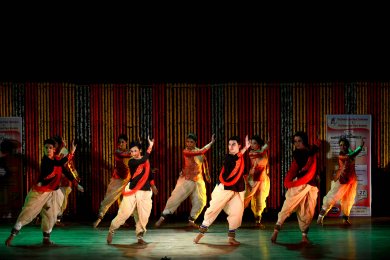 Pushpak Dance Academy The programme began on the first evening with a Kathak recital by the very young Trina Roy. Presented as the direct descendant of Kathak maestro Pt Jailal Maharaj, she meticulously followed Jaipur Gharana in teen-taal presentations. Her toda, tukra, parmelu and tatkars - with some gat bhav and gat nikas - were marked by enthusiasm but little besides. She should carefully watch her weight. Next came Sabarna Saha, trained under Dona Ganguly and bore some evidence of Kelubabu's legacy. Following the usual Vishnu vandana, Jagannathswami nayanpathagami..., she switched to a striking Nava Durga in adulation of the mother goddess with hymns from Chandi. Gifted with a svelte figure, she appeared confident in her short and succinct programme. Then appeared the medical graduate duo, Dr. Draupadi Praveen in Bharatanatyam and Dr. Padmini Krishnan in Kuchipudi. Known popularly as Neelamana Sisters, they executed a delightful jugalbandi. Attired in an arresting contrast of red and black hues, they followed their Pushpanjali Bhaja Ganapati... with a vivacious swarajati combination in ragamalika and talamalika, with each dancer bringing out the characteristics of her own form. Their last presentation was a keertanam Om namah Shivaya... in a soothing Bhairavi raga. The evening's finale was a superb Kathak group performance by Pushpak Dance Academy under Alokparna Guha. With a commendable stage presence, Alokparna - disciple of Dr. Malabika Mitra -turned out to be a highly skilled leader for the elaborate Ritu Chatusthay (A Quartet of Seasons). An amalgam of compositions on summer, monsoon, winter and spring, it was a riotous affair of leaps and pirouettes, circles and arcs, and a myriad other formations and movements that Kathak is capable of depicting - strung together aesthetically with ragas like Desh, Malhar, Bahar and many other colourful ragas, with great dancing by Aloknanda herself. 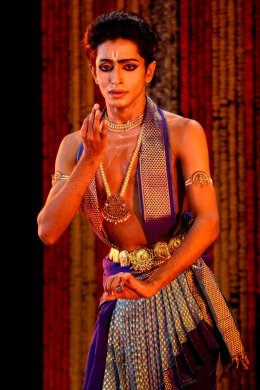 Subhajit Dutta 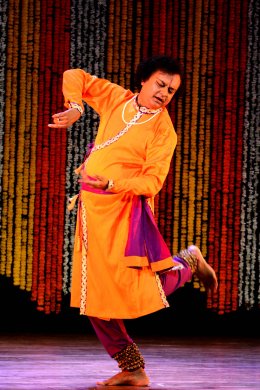 Deepak Maharaj 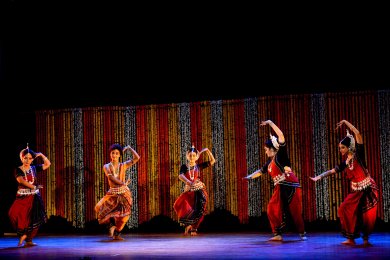 Narteswar Cultural Centre 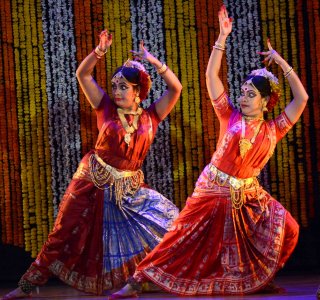 Gaudiya Nritya The second day stated on a sedate note with Subhajit Dutta dancing in Bharatanatyam style. Brought up under the tutelage of Sujatha Ramalingam, Subhajit was the picture of Pandanallur rigour and in all the three items he performed - Narayana Kautuvam in raga Nattai, varnam in raga Kapi and tillana in raga Suruti - his joy and dynamism was seemingly held under a controlled leash. Next were group compositions in Odissi by Narteswar Cultural Centre under the baton of Dr. Ipsita Mukherjee. After executing a vigorous Ganesha Tandava in Vajrakanti raga and a composition Krishnaya tubhyam namaha... in Madanagowda raga, the group showed their true mettle in an elaborate Dashavatar. The particular depictions of Vishnu's incarnations which stood out were Narasimha, Vamana, Vrigupati, Rama, Buddha and of course, Kalki. Deepak Maharaj, Pt. Birju Maharaj's youngest son, followed with Mahadeva Shiva Shambho Hara Hara Adideva... and then launched the age-old teentaal variations in technical Kathak. He had all the attributes as well as advantages imbibed from his illustrious father, but fell short of using those iconic eyebrows and eloquent, tremulous fingers of Maharaj-ji. Where he came into his elements was in the excellent singing of the notes of a thumri, which indeed he is very good at. Gaudiya Nritya Bharati came next to produce group work in Gaudiya Nritya which Dr. Mahua Mukherjee has been so assiduously building from scratch, from scriptural references and terracotta figurines. That she has achieved some significant landmarks was evident in the very first item of depicting the 24-strong alphabets articulated in folksy rhyme, Namaste Tarini... imbibing Jhumur style. The second item too was a path-breaking Alap Chari which demonstrated the musical movements (mainly in Desh raga) and nritta by the dancers in Gaudiya stance. The concluding item was a picturesque Dasa Nritya of ten incarnations again linked to Brihat Aranyaka Upanishad, with many credible postures in the chosen form. 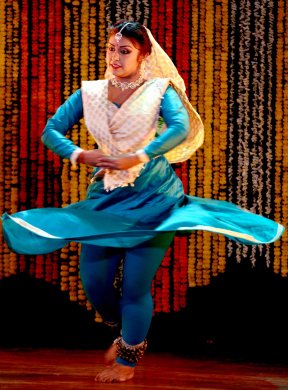 Anwesha Chakraborty 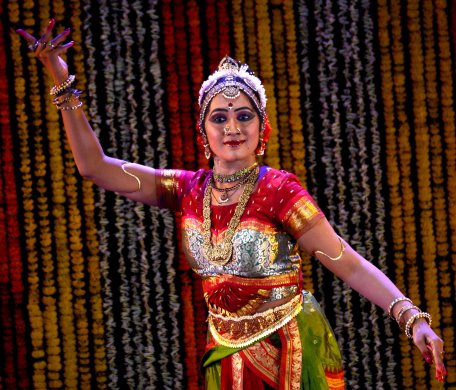 T. Reddi Lakshmi The third (and last) evening featured, first, the petite Anwesha Chakraborty in Kathak. Appearing to be somewhat unsteady and uncomfortable, she began with a hymn Om namah Shivaya... and plunged right away into technical pyrotechnics of teentaal, namely thaat, amad, toda, multiple padhants and padhant-thaat. She proceeded to a short thumri Mujhe chhedo naa... and concluded with some more kavits, padhants and tatkars. T. Reddi Lakshmi, the Kuchipudi dancer followed next, with an enviable 17-year grooming under gurus Jayarama Rao and Vanasree Rao behind her. With a statuesque stage presence, she appeared a tad too gaudily dressed and occasionally a little lokadharmi. Her opening item was an invocation to the goddess Durga from Chandi in Revati raga, followed by a Swati Thirunal composition in Shiva Sarani raga. She concluded with an elaborate Shiva Tarangam on a brass plate as per tradition. 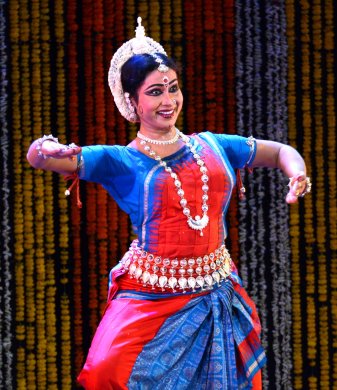 Sujata Mohapatra The penultimate abhinaya to Banamali Das's immortal lyric Kede chhanda jane lo sakhi Nandarajara gute pilati... set to music by Pt Bhubaneswar Mishra was again as choreographed by Kelubabu and saw Sujata climb to new heights of excellence. In a most diligent manner, she unfolded each of the myths alluded to in the song, namely, Putana, Bakasura, Shakatasura, Govardhan Dharana and Kaliya Damana. But the most riveting one was the final Viswarupa Darshana where the doting mother makes the child Krishna open his mouth to show what all filth he had eaten and is flabbergasted to discover the entire universe therein. However, in a trice, she recovers her supreme mother's self, clasps the little one tightly to her bosom and saunters off, oblivious of the mind-boggling spectacle she had just witnessed. Sujata brought tears to everyone's eyes. The evening culminated with a scintillating Moksha in Bhairavi raga -choreographed spectacularly by Kelubabu with music by Bhubaneswar Mishra - where lightning bhramaris and utplavanas calm down eventually to the quietude of poise, grace and peace.  Dr. Utpal K Banerjee is a scholar-commentator on performing arts over last four decades. He has authored 23 books on Indian art and culture, and 10 on Tagore studies. He served IGNCA as National Project Director, was a Tagore Research Scholar and is recipient of Padma Shri. Post your comments Please provide your name and email id when you use the Anonymous profile in the blog to post a comment. All appropriate comments posted with name & email id in the blog will also be featured in the site. |